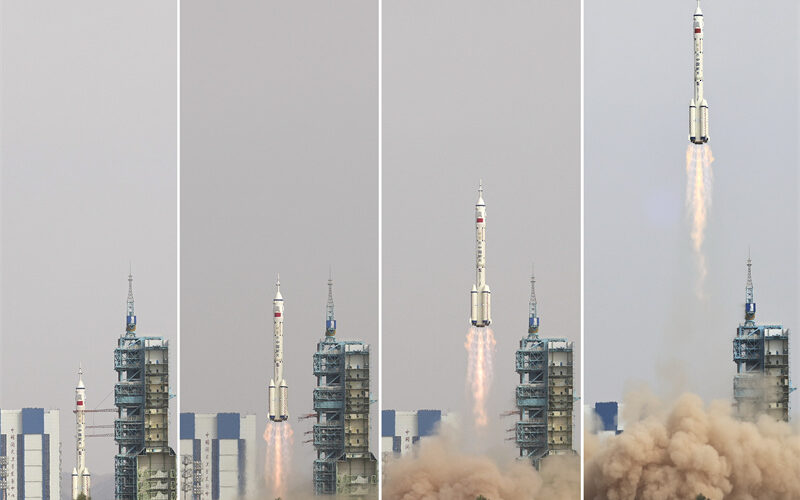China sent the first civilian astronaut into orbit on May 30, 2023, with the launch of the Shenzhou-16 mission to the Tiangong space station. This marks the country’s second in-orbit crew rotation to its space station.
The mission was launched from the Jiuquan Satellite Launch Center in China’s Gansu province with three astronauts onboard the Long March 2F rocket, Jing Haipeng, Zhu Yangzhu, and Gui Haichao, to start their five-month space journey.
Among the crew is Gui Haichao, a 36-year-old professor at China’s Beihang University, who has become the first Chinese civilian to fly in space. Haichao will handle payloads for space experiments, while Jing and Zhu will operate and manage the spacecraft, in addition to carrying out technical tests.
Haichao expressed his intention to seek guidance from Jing Haipeng, a member of China’s first astronaut team in 1998.
“I am sure that with mission commander Jing’s guidance and the crew members’ close cooperation, we will successfully perform our duties. We will use our efforts to contribute to the great ‘New Era’ and meet the expectations of the Party and the people,” Haichao told a press conference prior the flight.
Moreover, Haichao also wears glasses, an accessory not typical for those headed to space. Despite completing strict training in preparation for the mission, including desert field survival, sleep deprivation tests, and underwater drills, his vision impairment was critiqued as unsuitable. This prompted China’s State Administration of Science Technology and Industry for National Defense (SASTIND) to issue a statement clarifying that for the space mission, preparedness is “more about mental health” resilience than anything else.
The Shenzhou-16 crew will take over from the Shenzhou-15 astronauts who have already completed their mission at the space station Tiangong, or “heavenly palace” translated from Chinese. Tiangong space station is China’s first “real space laboratory”. It was completed in 2022 and has a large number of payloads and equipment installed on board alongside the world’s first ‘cold’ atomic clock.
This is China’s fifth manned mission to space since 2021. The country has invested billions of dollars in its ambitious space program to catch up with the United States and land astronauts on the Moon by 2030.

